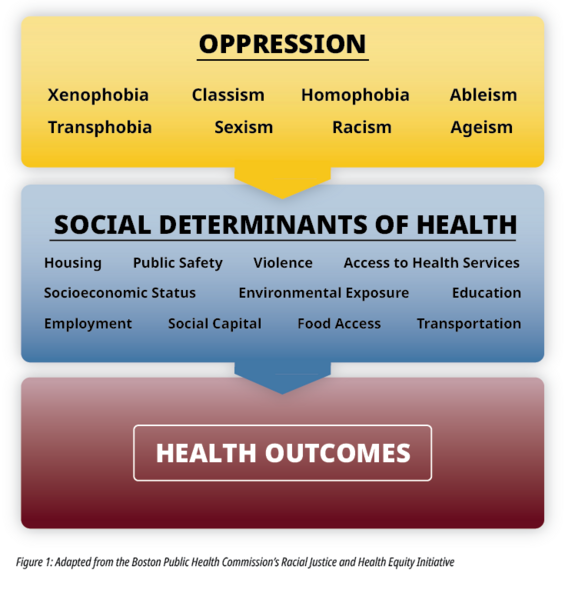About the Data
The following 12 birth defects are included in this data set:
| Defect Type | Defect Type |
|---|---|
| anencephaly | cleft lip without cleft palate |
| spina bifida (without anencephaly) | cleft palate without cleft lip |
| hypoplastic left heart syndrome | hypospadias |
| tetralogy of Fallot | gastroschisis |
| transposition of the great arteries (vessels) | limb deficiencies |
| cleft lip with cleft palate | trisomy 21 |
Birth defects data reported on this website are obtained from the Massachusetts Birth Defects Monitoring Program (MBDMP) , an active statewide surveillance program.

As you look at data on this webpage, you may see differences among population groups. The differences are especially noticeable between white people and people of color.
These differences exist because of structural racism. These differences are NOT because of an individual’s choices, behaviors, or identity.
Systems of oppression, such as racism, cause harm to everyone. They also influence the social determinants of health (SDoH), which impact health outcomes. See Figure 1.
It is important to keep these notes in mind when looking at the data and using it to inform public health efforts.
If you decide to share these data, remember to use racial equity context and framing. The DPH Racial Equity Data Road Map is one resource that can help.
About Birth Defects Data
Birth defects data from the MBDMP is part of the Massachusetts Center for Birth Defects Research and Prevention within the Bureau of Family Health and Nutrition. Birthing hospitals and other pediatric care centers across the state regularly submit birth defect diagnoses to the Center. These diagnoses are verified through medical record abstraction conducted by Center staff; during the abstracting process additional important demographic information is collected. The diagnoses are reviewed by a clinical geneticist and entered into a secure confidential electronic database maintained by the MBDMP.
Estimates are presented within PHIT for annual statewide prevalence of birth defects per 10,000 live births. Additionally, within PHIT you can find five-year prevelence of birth defects per 10,000 live births for Massachusetts counties and statewide by birth defect.Birth defects data can be used to monitor of trends over time, help identify high risk groups, and assist with prevention, evaluation, and program planning efforts. Monitoring data about the occurrence of birth defects in Massachusetts can also help us understand the potential for environmental factors to play a role. The prevalence of birth defects in a county can be compared to the prevalence of birth defects in the state as a whole.
When reviewing and interpreting birth defects data, it is important to take into consideration the following:
- Prevalence estimates are based on the residential location of the mother at the time of the child's diagnosis.
- Defects related to early fetal deaths (gestational age < 20 weeks) and/or terminations are not included in prevalence estimates. Furthermore, defects that are not diagnosed at birth, that do not need hospitalization or that are diagnosed after age one may be underreported.
- When looking at a smaller geographic area, such as a county, cell suppression rules may be applied to protect the privacy of a child with a birth defect and their family.
- Counts and prevalence estimates may differ slightly from those contained in other publications. These differences may be due to file updates, differences in calculation methods (such as grouping ages differently or rounding off numbers at different points in calculations), and updates or differences in population estimates.